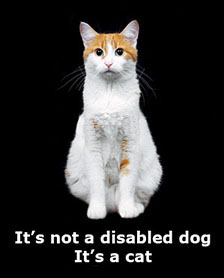Asperger’s and Relationships
Caitlin Freeman and Phil Garrow wrote the following article, Asperger Syndrome and Relationships, based on their five years together as a couple with Asperger Syndrome.
The article appeared in the Summer 2010 newsletter of ABOARD (Advisory Board on Autism and Related Disorders). The ABOARD Summer 2010 newsletter can be downloaded here.
Asperger Syndrome and Relationships
by Caitlin Freeman and Phil Garrow
We, Caitlin and Phil, have been partners now for more than four years, and we both have Asperger Syndrome (AS). As is typical among people with autism, we have both struggled with relationships and have had to overcome sensory, emotional, and social barriers to become a couple. What we have been able to create with each other is an intimate bond built on our cognitive compatibility and our respect for our neurological differences.
The first question many people ask us is, “Where did you meet?” The answer is that we met at a library potluck in Amherst, Massachusetts. The potluck also happened to be a singles event, although neither of us was there to meet someone.
We think the more important question is, “Why are we still together?”
Like any couple, our compatibility is a complex mixture of genetics, upbringing, and past experience. Added to this mix is our AS. On a purely statistical basis, it is amazing that we ever met each other. Common to other couples, the basis of our compatibility is communication.
Since the diagnosis of AS is recent, there was little formal social skills training when we were young, and so we had to develop our communication skills using what was available.
Caitlin spent her youth training in the theater, learning social skills by rehearsing scenes with other actors. Her directors told her that she lacked emotional expression on stage, and so she studied facial expression charts and learned to reproduce the expressions she saw using mirrors and video cameras. Later she learned conversation skills by practicing theatre improvisation with her fellow actors.
Phil spent more than twenty years in therapy. Therapy is often not well suited for training people on the autism spectrum. The assumption of many therapies is that the answers lie within the patient. In Phil’s case, he needed specific training to even know what the questions were. Phil was fortunate to find therapists who used directive approaches to help him learn the skills he needed.
The social training that we received was piecemeal, but it turned out to be effective over time. Caitlin participated in theatrical productions, and in the process, learned how to have conversations and communicate her emotions to other people. Phil attended group therapy, and in the process, learned how to manage stress and engage in clean transactions. Phil learned that a clean transaction is a literal form of communication with no sarcasm, emotional spin, or implied message. This form of communication is particularly well suited to those of us on the autism spectrum.
More than any other factor, the social, emotional, and psychological training we received during our early years has contributed to our continued relationship. We both take care of our disagreements, decisions, and emotions as we go along, never letting them build. We understand the psychology and the limitations of our AS, and we never argue. We know that the cost of building up emotions and releasing them explosively would be so much stimulation that it would take us days to recover.
Another aspect of our AS that helps our relationship is that we both take what the other says at face value. When we ask what time it is, we are simply asking for information, even if we are late for an important meeting. When we praise each other, or are affectionate, it is simply a statement of how we are feeling at that moment, with no other motivation. A question is always just a question. A statement is always just a statement.
As is common for people on the autism spectrum, we both have difficulty processing sound, touch, and visual information. When we are together, we are careful to interact in a way that does not create unexpected sensations for each other. We are both sensitive to each other’s needs, and will immediately stop any activity that is uncomfortable for the other person.
On a day-to-day basis, we don’t feel that we are so special in our relationship, but we are both very happy that we found each other. What seems remarkable to other people is something that we both know: with training, people on the autism spectrum can have successful, long-term intimate relationships.
We share our experiences because they may help other people on the autism spectrum have relationships. We also share our way of being together as a model that many neurotypical couples may find useful. A therapist that we know once asked us, “Don’t you ever put each other down?” From her question, we gathered that she thought that giving insults was a normal part of a relationship. She seemed surprised when we told her that we don’t use sarcasm or unkind remarks to communicate with each other. Maybe this is a part of autism spectrum culture that the rest of the world could benefit from.
Caitlin and Phil
Copyright © 2010 Caitlin Freeman and Phil Garrow
